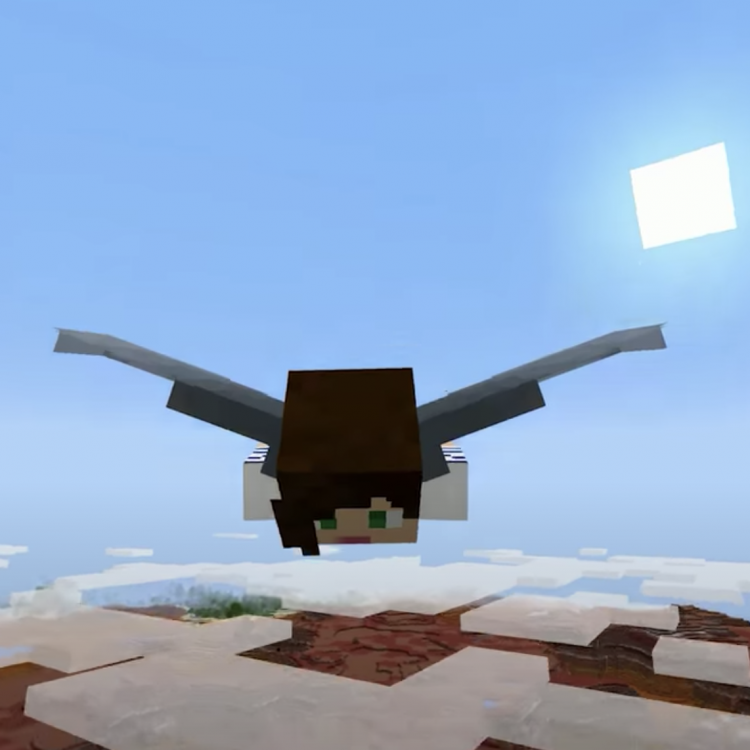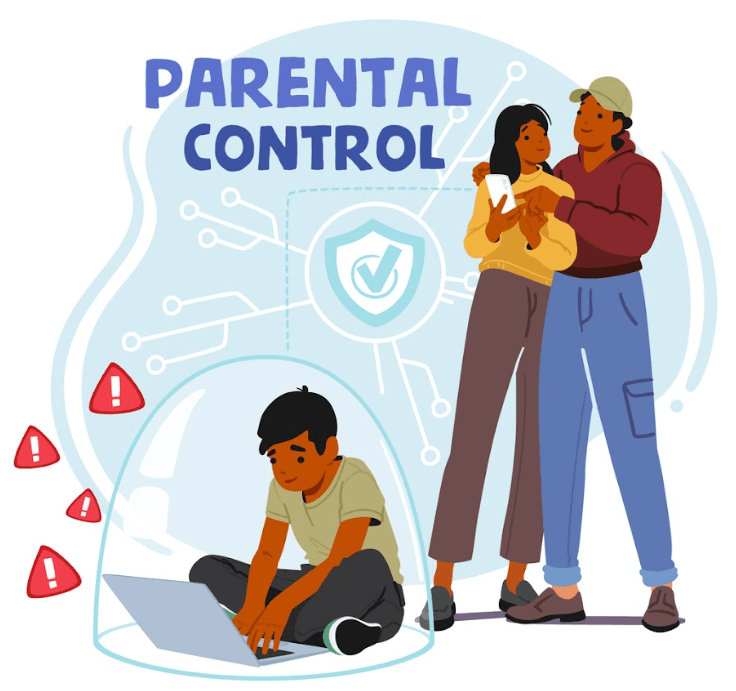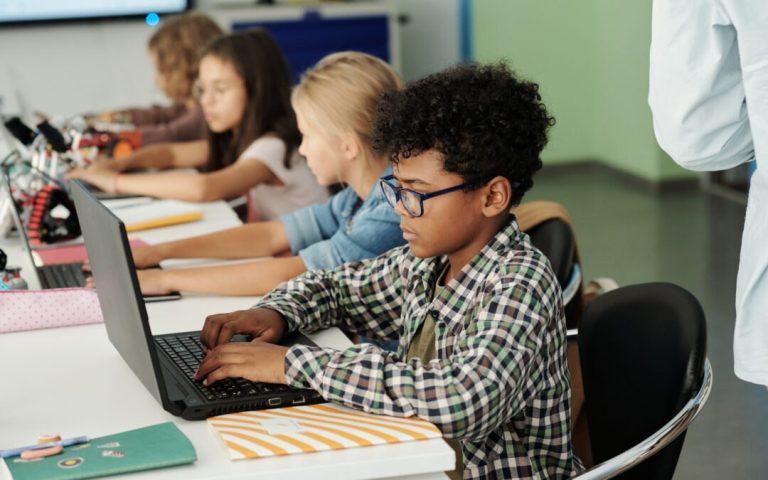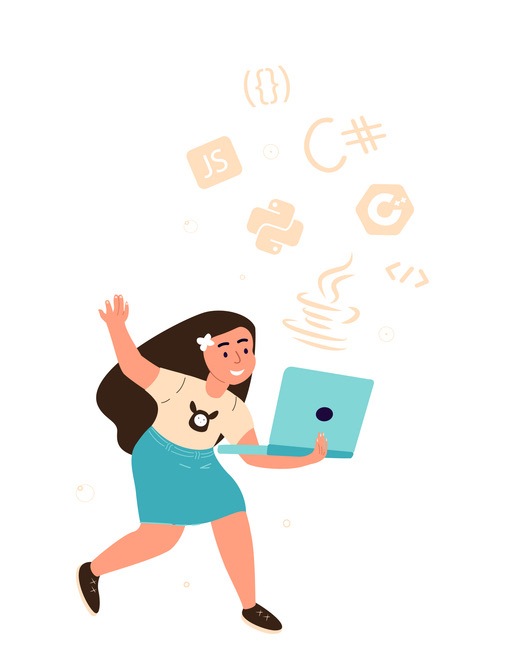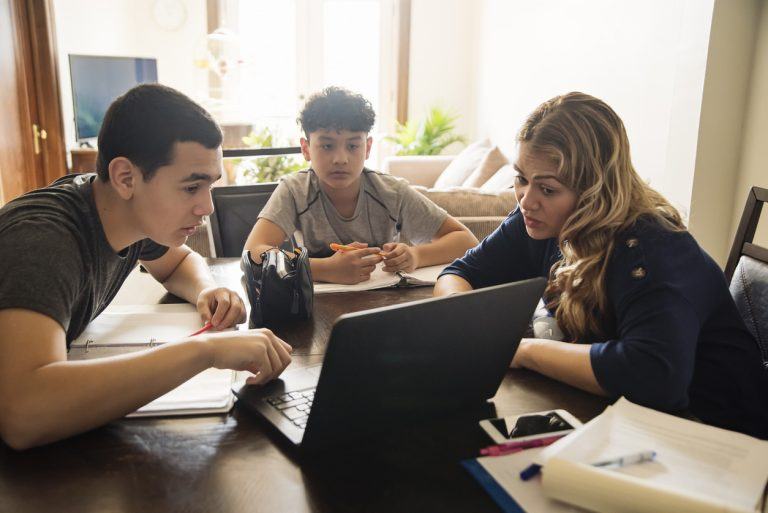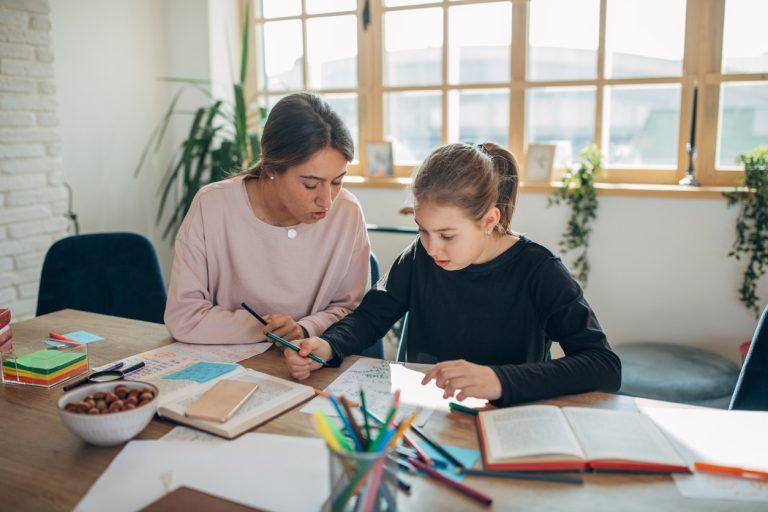All set for one of the biggest Computer Science events of the year? As we prepare for the annual Hour of Code, take a look at some of the best fun – and free! – Hour of Code activities that you and your child can use to participate!
What started out as a simple one-hour introduction to Computer Science has now become a worldwide celebration geared towards demystifying the seemingly complex art of “coding.” The Hour of Code is a dedicated event that is meant to emphasize how anybody and everybody can learn how to code, subsequently broadening participation in the Computer Science field.
It takes place during the annual Computer Science Education Week. This year, that’s December 7 to 13, 2020.
The Hour of Code initially involved simple coding activities that were meant to take no more than an hour to complete. It has now grown to include all sorts of community efforts, such as full guided tutorials and whole school events. As of 2020, Hour of Code is supported by over 400 partners and 200,000 educators all over the world.
How Can My Child Participate in Hour of Code?
As a teacher or parent, start by reviewing the official Hour of Code How-To Guide. Once you have an idea of what the Hour of Code entails, you have several options.
If you want a full-blown celebration that your kid can enjoy with their classmates, friends, or peers, you can work with your child’s school to organize an official school function – like a one-day celebration or an after-school extracurricular.
Alternatively, you can work with community managers and organizations to set up a block, neighborhood, or community event for the week.
If you’d prefer something quieter – and with much less organizing involved – you and your child can always celebrate Hour of Code activities by yourselves (or with a group of their friends, even).
Even if you don’t know the first thing about coding, you can still host an event. All Hour of Code activities is self-guided. All you need to do is choose a tutorial from the official list, and then pick an hour for it to happen. The grassroots organization will take care of the rest.
Is a Computer Mandatory?
Actually, no! While it’s certainly encouraged – in order to try online coding tutorials – a computer or device is not necessary to participate in Hour of Code activities. There are plenty of activities that can be done offline and away from a computer.
These are called Unplugged Activities, and they’re actually highly recommended if you’re having a bunch of different groups participates. It comes off as parlor games or sports day games, only with coding and programming as the underlying theme.
Fun & Free Coding Activities for Hour of Code Week
If you’re interested in participating, check out these 15 free and fun coding activities you can try for the Hour of Code this year!
- Create and Animate Your Own Google Logo
- Code and Conquer with Hotwheels (Unplugged Activity)
- Code Outside with Chalk (Unplugged Activity)
- Create Your Own App with Intro to App Lab
- Create Your Own Flappy Game
- Program Your Robotic Friends (Unplugged Activity)
- Code Snowflakes with Anna and Elsa
- Escape from a Digital Escape Room
- Code Complex Mathematics Models
- Experience Minecraft During the Hour of Code
- Explore Box Island
- Survive the Star Wars Galaxy
- Animate an Adventure Game
- Explore CodeSpark Academy with the Foos
- Solve Musical Puzzles with Play That Tune App
Once you’re done researching celebrate hour of code activities with Codakid’s Free trial!
Table of Contents
1. Create and Animate Your Own Google Logo (Scratch)
Recommended Level: Beginners, Aged 10+
Children can use popular visual programming language Scratch to create their own Google Logo and bring it to life. Let the letters dance, change color, or tell a story – all depending on how the kids choose to code them!
Unlike other common coding languages, Scratch is a visual, block-based language that utilizes a drag-and-drop interface rather than a purely textual one. It was specifically designed by MIT for kids and beginners to understand the principles of coding without having to worry about technical details (like syntax).
This makes it one of the best Hour of Code activities to do, seeing as the entry-level is so low and the concept is fairly easy to grasp.

2. Code and Conquer with Hotwheels (Unplugged Activity)
Recommended Level: Pre-Coding, Aged 4+
As we mentioned earlier, there is plenty of Hour of Code activities that teach coding for kids without requiring any sort of device. These Unplugged Activities are perfect for parents and teachers that don’t have the means or resources to let their kids participate online.
This Hotwheels activity is a fun Introduction to Coding course, and it’s a real treat for little boys and girls who love cars. You will need:
- A floor grid (make one out of painters tape or road tape)
- Red construction paper
- Hotwheels cars (one for each participant)
Preparation:
Create a 5×5 or 5×6 floor grid using painters tape or road tape. Cut squares (or any other shape) out of the red construction paper to represent “hot lava.” Make sure they’re big enough to fill up a square on the grid.
Activity:
Lay the grid out on the floor and place the construction paper lava in different squares, filling the grid as much or as little as you want. Challenge the children to get their Hotwheels from start to finish without falling in the lava. The catch is that they can only move the cars using “code talk” or coding cards. Bonus points are awarded for certain milestones or extra challenges fulfilled.
You can find more details about this activity here.
3. Code Outside with Chalk (Unplugged Activity)
Recommended Level: Pre-Coding, Aged 4+
This is another great unplugged activity that’s actually pretty similar to the Hotwheels one, in that you’ll need a floor grid. This time around though, you can make one with chalk.
Yep, this activity is meant to be played outside.

Draw an 8×8 grid on the ground and fill in some of the squares. These squares will be the “Water Blaster Zones.” Now, each participant gets a robot in the form of their parent, teacher, friend, or classmate. They must direct their robot to the Water Blaster Zones safely using only “code talk” or coding instructions (again; much like the Hotwheels activity).
Once they get their robot to the Water Blaster Zone they were aiming for, they have free rein to shoot their robot with water guns!
It’s a pretty messy activity, as you can imagine, but definitely unforgettable. And a ton of fun! And that’s really what makes any Hour of Code Unplugged Activity so great.
4. Create Your Own App with Intro to App Lab
Recommended Level: Intermediate, Aged 13+
Code.org’s Intro to App Lab is a pretty neat – and pretty extensive – tutorial that teaches kids how to create their own fully-functional app in JavaScript using block-based programming (similar to Scratch). Advanced coders even have the option to switch to a text-based programming language if they’re ready to deal with and debug potential syntax issues.
There are 15 stages all in all, and each can be navigated to once you complete the requirements of each stage. Progress is also automatically saved every few seconds, so your child won’t have to worry about losing their work. Learn more about the Intro to App Lab here.
5. Create Your Own Flappy Game
Recommended Level: Beginner, for Grades 2+
Instead of an app, younger children and beginners can try creating their own Flappy Bird game – yes, that popular yet oh-so-simple tap-tap app – using drag-and-drop programming. They can customize how it looks, decide on the length or runtime, and even change the main “flappy” character! Flappy Dog? Flappy Cat? Why not?
The process of creating the game is actually deceptively challenging – much like the game itself! It’s a fun, enjoyable way to teach coding for kids. It also encourages students to think outside the box, to utilize everything they’ve learned thus far about coding to complete the challenge.
Want a preview of this challenge? Check out the Flappy Bird activity on Code.org.
6. Program Your Robotic Friends (Unplugged Activity)
Recommended Level: Pre-Coding, Grades K-3+
Much like the chalk grid activity (number 3), this activity involves your kiddoes having to “program” or “control” another person to meet the parameters of the challenge. However, this focuses more on the concept of debugging rather than sequencing.
In this Traveling Circuits lesson, the goal is to replicate a pre-selected image using a stack of cups. The only person who can touch the cups is the “robot,” or the one being programmed by the other children.
The only movement the robot can do is limited to the algorithm the other students created. The algorithm can be built using only a preset selection of commands – “Step forward,” “Pick up cup,” “Put cup down,” and so on.
It’s actually a lot more challenging than people realize, so be prepared to dedicate a little more time to this activity – especially if a lot of children are involved!
7. Code Snowflakes with Anna & Elsa
Recommended Level: Beginners, Grades 2+
This activity is perfect for all the little boys and girls who love Disney’s hit animated movie, Frozen. It’s basically a program that teaches the basics of coding, focusing uniquely on shapes, lines, and patterns.

Following the obvious theme of Frozen, your child can eventually create snowflakes out of nothing but code! Children will create works of digital art as they follow Queen Elsa and Princess Anna of Arendelle, learning about sequencing, patterns, loops, and algorithms along the way.
Overall, the activity is cute, highly interactive, and incredibly on-brand (since Hour of Code happens in December).
8. Escape from a Digital Escape Room
Recommended Level: Intermediate to Expert, Ages 13+
This is arguably one of the more challenging activities available for Hour of Code, so please review them carefully before giving them to students. Always take note of the level and age recommendation!
Real-life escape rooms are already pretty tough. Add elements of text-based coding and you’re in for a real challenge. But if your child enjoys being pushed to the limits of their creativity and problem-solving abilities, then this activity is incredibly perfect.
These virtual escape rooms are meant to be as frustrating and head-scratching as their real-life counterparts. Inspect the page, watch the videos, and click around for invisible links as you try your best to break out. There are currently four Digital Escape Rooms available:
9. Code Complex Mathematics Models
Recommended Level: Intermediate to Advanced, Grades 6+
NOTE: It is highly recommended that students attempting this activity have already completed an Algebra I course or higher.
This activity is a little more complicated and a lot less game-like than the others, but it’s still a valuable lesson to learn in terms of programming. And just like the Digital Escape Rooms, this one is absolutely perfect for students and pre-teens who want to challenge themselves (and who genuinely enjoy coding).
This activity uses a text-based programming language called Python. Students will follow their friendly digital guide, Tracy the Turtle, as she helps them code different mathematical models (like wave graphs and linear graphs). At the end of the course, the student can even print a certificate upon completion!
You can learn more about it here.
10. Experience Minecraft During the Hour of Code
Recommended Level: Beginner, Grades 2+
Explore the world of Minecraft as a Designer, an Adventurer, or a journeying Hero. Children who already play this game – or at least know it – will love seeing the familiar setting from a different perspective i.e., a learning one. Children who don’t know the game will fall in love with the incredible open world, the cute graphics, and the addictive gameplay.
If you’re not familiar with Minecraft, we highly recommend you check out our 2020 guide for parents. It’s basically a versatile sandbox game that allows for several different types of gameplay; creation, survival, collection, combat, and so on. It’s been around for more than a decade and it’s still going strong.
Minecraft’s easy modification system and kid-friendly UIs actually makes it one of the best platforms to teach coding for kids. In fact, we at CodaKid offer an extensive package on Minecraft Coding: 15 courses, 75 quests, and at least 150 challenges. Click here to learn more about it!
For the Hour of Code, Code.org has three official Minecraft activities that students can attempt to complete. Each one consists of a handful of challenges that will cover coding concepts like loops, variables, and functions. The activities range from programming a chicken through a maze to taking Minecraft character Steve on a journey throughout the Minecraft world.
11. Explore Box Island
Recommended Level: Beginner, Ages 6+
Box Island is an award-winning mobile coding adventure available on both iOS and Android devices. And it’s free! Challenge the children to complete each level and collect as many stars as they can as they try to survive this code-based, survival-style game.
Players can direct their characters – that are boxes, hence the name – to run through small mazes, quickly but carefully crafting an algorithm for them to follow in advance. One code or direction block out place could spell the difference between victory and defeat.
There are over 100 beautifully-designed levels on this game, all gradually increasing in difficulty. That, plus the eye-catching graphics and overall ease-of-use value, makes Box Island perfect for even the youngest of coders.
(We’ve actually written a review of Box Island and other great free coding apps for kids. Go check it out!)
12. Survive the Star Wars Galaxy
Recommended Level: Beginner, Grades 2+

Your child can now create their own Star Wars game in a galaxy far, far away. Collect scrap metal, program droids, and avoid bandits – all while learning the fundamental basics of coding.
This fun and interactive coding for kids game even has two difficulty settings. Beginners can choose to play using a block-based programming language called Blockly so that they can focus on the principles rather than syntax. More advanced players who have a basic grasp of text-based programming can choose to complete the game using Javascript.
There are several levels to complete, all with a myriad of tasks to complete and some extra challenges to throw in. It may not be as challenging for older students, but the concept is definitely novel!
13. Animate an Adventure Game
Recommended Level: Beginner, Ages 8+
Send Garnet, Pearl, and Steven from Steven Universe to collect gems, or have Finn and Jake (from Adventure Time) explore the unexplored edges of Craig’s Creek.
You can even have all three brothers from We Bare Bears make a cameo!
This fun and free animation game from Scratch allows your child to create a fully animated and fully playable adventure game with popular cartoon characters they may very well know (and love). There’s an on-screen video tutorial that they can easily follow along to as they painstakingly craft their first (of many) adventure-themed animated collecting games!
Learn more about it here!
14. Explore CodeSpark Academy with the Foos
Recommended Level: Beginners, Pre-Readers to Grade 5
CodeSpark Academy has been a long-time participant in Hour of Code. This year, why not have your child embark on a little journey with their adorable “Foos” characters? Together, they can solve riddles and puzzle out solutions to some truly challenging coding conundrums.
CodeSpark has developed its own app to teach coding for kids. Although there is a membership subscription involved, the app offers 100% free Hour of Code resources for educators to use. As a parent, you get a free trial that you can easily utilize during the Hour of Code to let your child enjoy some quick, clean, and cutely-animated coding fun.
The app is highly intuitive and specially designed for pre-readers. So even if your child has yet to master reading, they can – ideally – understand and use the app with no problems.
15. Solve Musical Puzzles with Play That Tune App
Recommended Level: Beginners to Advanced, Grades 6+
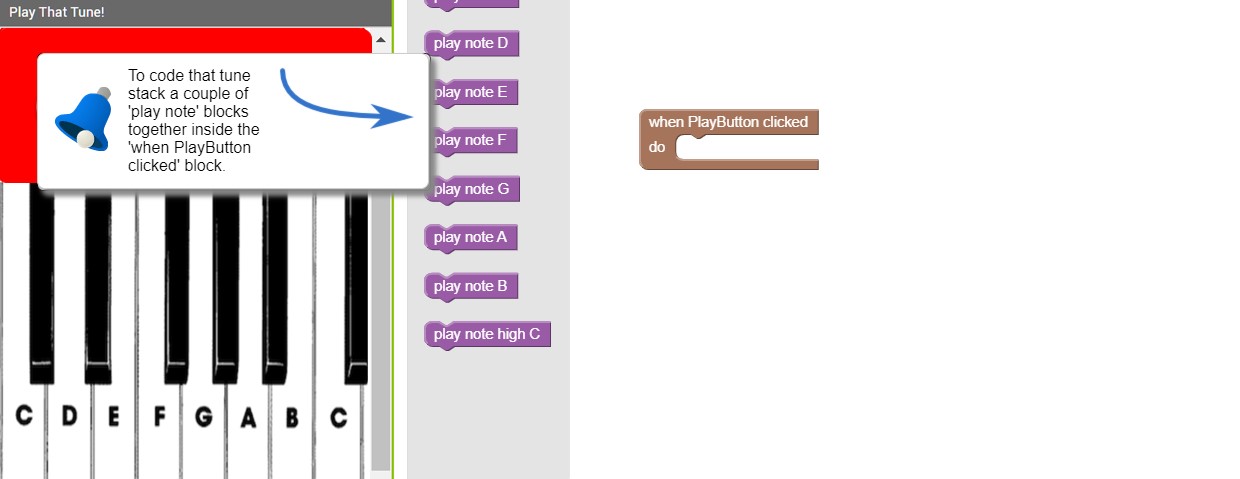
The Play That Tune app presents musical puzzles by way of tunes played on a keyboard. Students must write code – using a block-based programming language – that matches the tune being played.
It’s a pretty unique approach to teaching coding for kids, as not many would equate music to programming. However, the numbers show that this game certainly works! What’s more, it’s a great way to introduce block-based programming to children who may not be 100% familiar with the concept.
What’s interesting is that this game also allows for different levels of difficulty. Coding concepts such as sequencing, repetition algorithms, and selection are touched on. However, the premise remains easy to understand – and easy to execute – for beginner coders. More advanced coders can actually program their own tune to add to the musical puzzle selection.
Conclusion
Which Hour of Code activity struck your fancy? Are you up to organizing a full-scale Unplugged Activity for your children – and maybe some of their friends?
Lets recap our 15 best hour of code activities:
- Create and Animate Your Own Google Logo
- Code and Conquer with Hotwheels (Unplugged Activity)
- Code Outside with Chalk (Unplugged Activity)
- Create Your Own App with Intro to App Lab
- Create Your Own Flappy Game
- Program Your Robotic Friends (Unplugged Activity)
- Code Snowflakes with Anna and Elsa
- Escape from a Digital Escape Room
- Code Complex Mathematics Models
- Experience Minecraft During the Hour of Code
- Explore Box Island
- Survive the Star Wars Galaxy
- Animate an Adventure Game
- Explore CodeSpark Academy with the Foos
- Solve Musical Puzzles with Play That Tune App
Whatever you choose to do, we can’t help but highly encourage it! After all, programming is an excellent skill to have – especially in today’s society!
Celebrate hour of code activities with Codakid’s Free trial!
